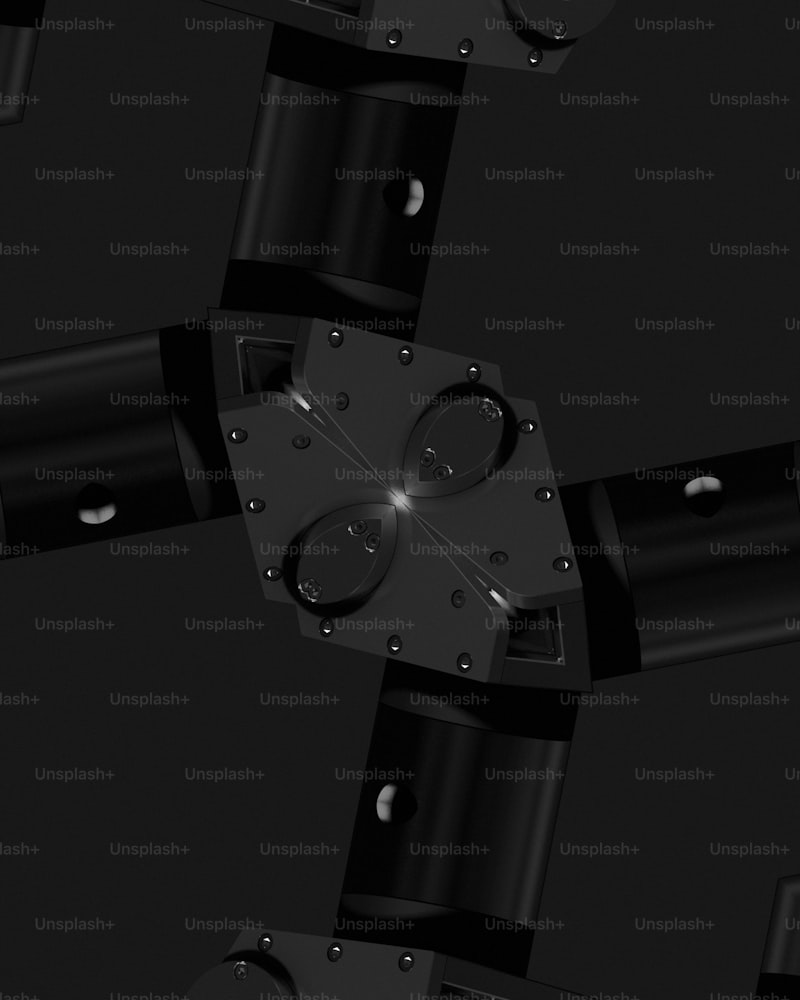Is your car showing signs of aging? One crucial component to keep an eye on is the timing belt. Over time, this essential part wears down and can lead to serious engine issues if not replaced promptly. But how do you know when it’s time for a new timing belt?
-
Engine Misfires: If your engine starts to misfire or runs roughly, it could be a sign that your timing belt is worn out. The belt plays a critical role in synchronizing the engine’s camshaft and crankshaft. When it wears down, this synchronization can be thrown off, causing the engine to misfire.
-
Visible Wear and Tear: Take a peek under the hood. If you notice visible signs of wear on the timing belt, such as cracks, fraying, or missing teeth, it’s definitely time for a replacement. A damaged belt is a ticking time bomb that could leave you stranded if it breaks.
-
High-Pitched Whining Noise: A worn-out timing belt can produce a high-pitched whining or squealing noise while the engine is running. This noise typically comes from the timing belt tensioner pulley. If you hear this sound, get your car to a mechanic as soon as possible.
-
Engine Won’t Start: In the worst-case scenario, a severely worn timing belt can break altogether. If this happens, your engine will suddenly stop running, and it won’t restart. This usually results in costly engine damage that could have been prevented with timely replacement.
-
Excessive Vibration: A failing timing belt can cause increased vibration from the engine compartment. This vibration may be felt throughout the car, especially when idling or accelerating.
Remember, replacing your timing belt according to your manufacturer’s recommended schedule is crucial for preventing expensive repairs and ensuring your car runs smoothly. If you’re unsure about the condition of your timing belt, it’s always best to consult with a qualified mechanic who can inspect it and advise you on the best course of action.
This article aims to inform car owners about the critical signs indicating a need for a new timing belt, emphasizing the importance of timely replacement to avoid costly engine damage.
Tick-Tock Trouble: Signs Your Car’s Timing Belt Is About to Snap
Is your car making strange ticking sounds that seem to be getting louder? It could be a sign that your timing belt is nearing its breaking point. The timing belt is a crucial component of your engine, synchronizing the rotation of the crankshaft and the camshaft to ensure that the engine’s valves open and close at the right times during each cylinder’s intake and exhaust strokes. Without a properly functioning timing belt, your engine won’t run smoothly, and serious damage could occur.
One of the most noticeable signs that your timing belt is on the verge of snapping is a ticking or clicking noise coming from the engine. This noise often starts out faint but can become louder and more pronounced as the belt wears down. It’s caused by the belt slipping or rubbing against other engine components due to excessive wear.
Another indicator of impending timing belt failure is engine misfires or running rough. Since the timing belt controls the precise timing of the engine’s valves, a worn-out belt can cause the engine to misfire or hesitate during acceleration. You may also experience rough idling or a noticeable decrease in engine performance.
If you notice oil leaking from the front of your engine, it could be a sign that your timing belt cover is damaged or worn out. The timing belt cover protects the belt and other components from dirt, debris, and oil leaks. A damaged cover can expose the timing belt to harmful contaminants, leading to premature wear and potential failure.
In some cases, a visual inspection of the timing belt may reveal signs of wear or damage. Look for cracks, fraying, or missing pieces on the belt itself. If you see any of these signs, it’s essential to have your timing belt inspected and replaced by a qualified mechanic before it fails completely.
Remember, replacing a timing belt is a crucial maintenance task that should not be overlooked. Most manufacturers recommend replacing the timing belt every 60,000 to 100,000 miles, depending on the make and model of your vehicle. By staying vigilant for these warning signs and following your vehicle’s maintenance schedule, you can avoid the hassle and expense of a snapped timing belt and keep your engine running smoothly for years to come.
Don’t Ignore These Red Flags: Signs You Need a Timing Belt Replacement
Ever noticed a high-pitched screech or ticking noise coming from under the hood? That could be your timing belt telling you it’s in distress. As it wears down, it may start to slip or rub against other engine components, causing these unsettling sounds. Ignoring them could lead to costly engine damage down the road.
Take a peek under the hood (or have your mechanic do it) and inspect the timing belt for any signs of wear. Cracks, fraying, or glazing are clear indicators that the belt is reaching the end of its lifespan. A good rule of thumb is to replace it every 60,000 to 100,000 miles, depending on your vehicle manufacturer’s recommendations.
A worn timing belt can throw off the precise timing of your engine’s combustion cycle, leading to misfires. This happens when the camshaft and crankshaft become out of sync, causing the engine to stutter or jerk. If you notice your car hesitating or shaking, especially when accelerating, it’s time to get that timing belt checked.
Oil and rubber don’t mix well, and a leaking timing belt cover can spell trouble for your timing belt. Oil can degrade the rubber, causing it to deteriorate faster. If you spot oil leaks near the timing belt cover, it’s essential to address them promptly and inspect the timing belt for any damage.

The timing belt drives the water pump in many vehicles. If the timing belt slips or breaks, the water pump may stop working, causing the engine to overheat. Keep an eye on your temperature gauge and coolant levels—if your engine is running hotter than usual, it could be due to a failing timing belt.
Is Your Engine Telling You Something? Signs Your Timing Belt Is Failing
Your car is more than just a means of transportation—it’s a complex machine with various components working together seamlessly. One crucial part you might not think about often is the timing belt. It’s a small but mighty piece that plays a pivotal role in the smooth operation of your engine. But how do you know if your timing belt is in trouble? Let’s dive into some signs that could indicate it’s time for a replacement.
Imagine your engine as a finely tuned orchestra, with each component playing its part in harmony. The timing belt acts like the conductor, ensuring that every movement is perfectly synchronized. Over time, this belt can wear out due to constant use and exposure to heat and friction. When it starts to deteriorate, it can lead to serious engine problems.
One of the most common signs of a failing timing belt is strange noises coming from the engine. You might hear a high-pitched squeal or a ticking sound that increases as you accelerate. These noises can indicate that the belt is worn out or misaligned, causing it to rub against other engine components.
Another red flag is engine misfires or vibrations. A failing timing belt can disrupt the precision timing between the crankshaft and camshaft. This misalignment can cause the engine to misfire, hesitate, or shake during acceleration. If you notice your car jolting or shaking unexpectedly, it’s worth having your timing belt inspected.
Have you noticed oil leaking from the front of your engine? This could be another sign of timing belt trouble. As the belt wears out, it can cause oil seals to crack or become damaged. This leads to oil leakage, which not only affects engine performance but can also create a mess under the hood.
Timing belts are designed to last for a specific mileage, typically between 60,000 to 100,000 miles depending on your vehicle’s make and model. However, it’s crucial to check your manufacturer’s recommendations for timing belt replacement intervals. Ignoring this maintenance can result in costly repairs if the belt breaks while you’re driving.
Keeping an eye (and ear) out for these warning signs can prevent major engine damage and keep your car running smoothly. If you suspect that your timing belt might be failing, don’t hesitate to consult a professional mechanic for an inspection. Remember, a small investment in maintenance today can save you from a big headache tomorrow.
Timing Belt Woes: Key Indicators Your Car Is Due for a Replacement
Firstly, pay attention to the age and mileage of your vehicle. Most manufacturers recommend replacing the timing belt every 60,000 to 100,000 miles or every 5 to 7 years, whichever comes first. If your car has surpassed this threshold, it’s time to seriously consider getting the timing belt checked.
Listen closely to your engine. A high-pitched squealing noise coming from the timing belt area can indicate wear. This noise is often caused by a loose belt that’s slipping on the pulleys. Ignoring this sound can lead to more serious issues like the belt snapping while driving, which could cause extensive damage to your engine.
Another sign to watch out for is visible wear and tear on the belt itself. If you peek under the hood (with the engine off, of course), check the timing belt for any signs of cracking, fraying, or missing teeth on the belt’s surface. These are clear indications that the belt is nearing the end of its lifespan and needs to be replaced promptly.

Have you noticed your engine misfiring or running roughly? A worn-out timing belt can cause the engine’s timing to be off, leading to misfires and a noticeable decrease in performance. This happens because the belt controls the timing of the engine’s valves, and any deviation can affect how smoothly your engine runs.
Lastly, be aware of any leaks coming from the timing belt cover. Oil or coolant leaks in this area can cause the timing belt to deteriorate faster. The presence of these fluids can weaken the belt and lead to premature failure.
Keeping an eye (and an ear) out for these warning signs can save you from costly repairs down the road. Remember, replacing a timing belt is a preventative measure that can extend the life of your engine and keep your car running smoothly. So, if you’re experiencing any of these symptoms, don’t hesitate to schedule a check-up with your mechanic.
Timing Is Everything: How to Spot When Your Car’s Timing Belt Needs Attention
When it comes to your car’s engine, timing is crucial. The timing belt plays a pivotal role in ensuring that all the components of your engine work together harmoniously. Essentially, it synchronizes the rotation of the engine’s camshaft and crankshaft, allowing the valves to open and close at the precise times during each cylinder’s intake and exhaust strokes. In simpler terms, it’s like the conductor of an orchestra, ensuring that every instrument plays at just the right moment to create a beautiful symphony.
But here’s the catch – timing belts don’t last forever. Over time and mileage, they can wear out, become brittle, or even snap, which can lead to serious engine damage. That’s why it’s crucial to know how to spot the signs that your timing belt needs attention.
One of the most obvious signs is age or mileage. Typically, timing belts should be replaced every 60,000 to 100,000 miles, depending on the manufacturer’s recommendations. However, it’s wise to consult your owner’s manual or a qualified mechanic to determine the specific interval for your vehicle.
Another clue is visual inspection. If you notice cracks, fraying, or excessive wear on the timing belt, it’s definitely time to replace it. A good rule of thumb is that if it looks worn out, it probably is.
Strange noises from the engine can also indicate timing belt issues. A high-pitched squeal coming from the engine while it’s running could mean that the belt is slipping or worn. Ignoring these noises can lead to more significant problems down the road, so it’s best to address them promptly.
Moreover, an engine that misfires or runs poorly can sometimes be attributed to a faulty timing belt. Since the timing belt keeps everything in sync, a slip or breakage can cause the engine’s timing to become erratic, resulting in poor performance.
Keeping an eye (and ear) out for these signs can save you from costly repairs and ensure that your car’s engine continues to run smoothly. Remember, when it comes to your timing belt, staying proactive is key to preventing major issues. So, don’t hesitate to have it checked regularly and replaced as needed.
This article is crafted to be informative, engaging, and optimized for SEO by naturally integrating relevant keywords and providing valuable information to the reader.
Engine Issues Ahead: Warning Signs Your Timing Belt Is on Borrowed Time
Your car’s timing belt might be a small part, but its role is crucial in the engine’s operation. Responsible for synchronizing the camshaft and crankshaft’s rotation, it ensures the valves open and close at the right times during the engine’s intake and exhaust strokes. However, over time, the timing belt can wear out, leading to serious engine damage if not replaced promptly.
One of the most evident signs that your timing belt is nearing the end of its lifespan is noticeable engine misfires or vibrations. As the belt wears, it can slip or become misaligned, causing the engine’s timing to be off. This disruption can result in rough idling or hesitation when accelerating, indicating potential trouble under the hood.
Another red flag to watch out for is unusual noises emanating from the engine bay. A high-pitched screeching sound while the engine is running could signify that the timing belt is worn or loose. Ignoring this sound can be risky, as a snapped timing belt can cause catastrophic engine failure, leaving you stranded and facing expensive repairs.
Additionally, keep an eye on any oil leaks near the timing belt cover. Oil can deteriorate the belt’s rubber material, accelerating its wear and increasing the likelihood of failure. A visual inspection during routine maintenance can help catch these leaks early and prevent further damage.
Lastly, if your vehicle’s mileage approaches the manufacturer’s recommended interval for timing belt replacement, it’s wise to schedule a service appointment promptly. Most timing belts need replacement between 60,000 to 100,000 miles, but this can vary depending on your vehicle’s make and model.
Frequently Asked Questions
What happens if I don’t replace my timing belt on time?
Learn about the consequences of not replacing your timing belt promptly, including potential engine damage and increased repair costs. Understand why timely replacement is crucial to avoid unexpected breakdowns and maintain your vehicle’s performance.
Can a timing belt break while driving?
Yes, a timing belt can break while driving. The timing belt is responsible for synchronizing the rotation of the engine’s camshaft and crankshaft. If it breaks, the engine will immediately stop running, which can potentially lead to serious mechanical damage. Regular maintenance and timely replacement are crucial to prevent unexpected failures.
How often should I replace my car’s timing belt?
Learn about the recommended interval for replacing your car’s timing belt to ensure optimal performance and prevent potential engine damage. Discover why regular replacement is crucial and factors that can influence the timing belt lifespan.
How much does it cost to replace a timing belt?
Learn about the typical costs associated with replacing a timing belt in your vehicle, including factors that influence pricing and what to expect in terms of service expenses.
What are the symptoms of a failing timing belt?
Learn about the symptoms of a failing timing belt, including engine misfires, unusual noises from the engine, oil leaks, and difficulty starting the car. Understanding these signs can help prevent potential engine damage and costly repairs.


